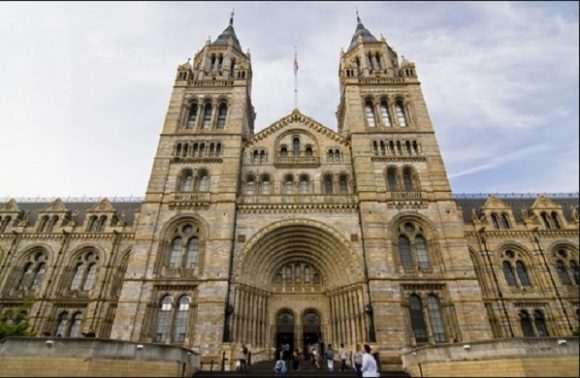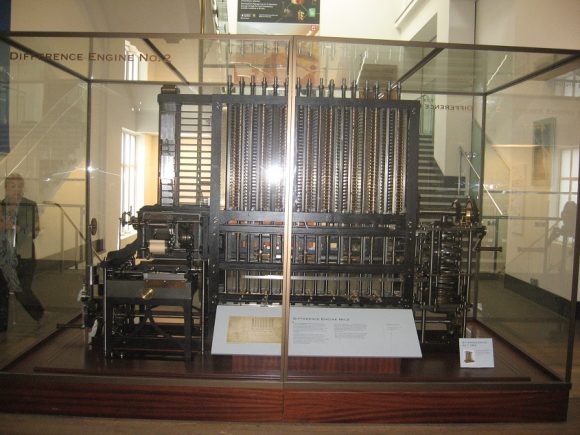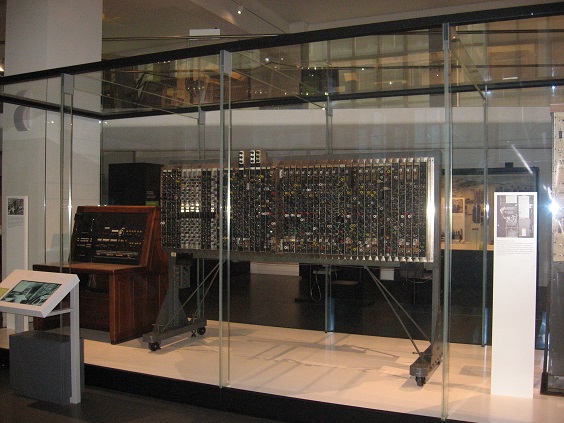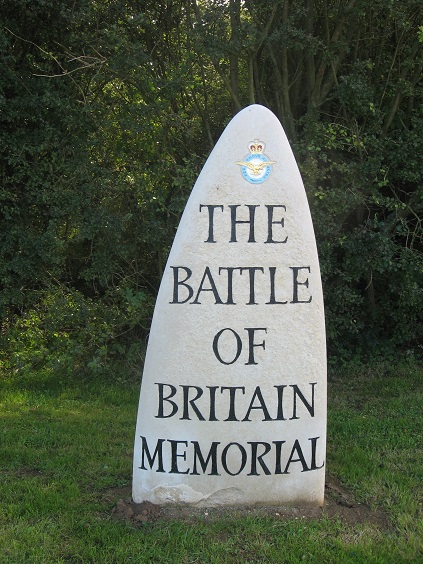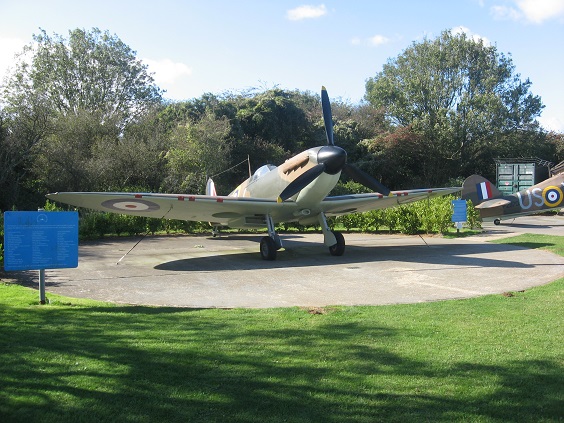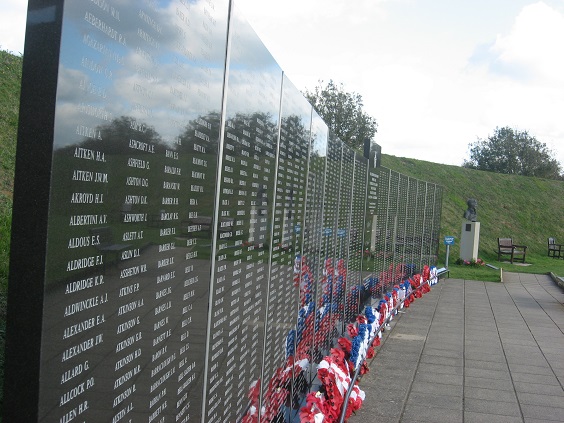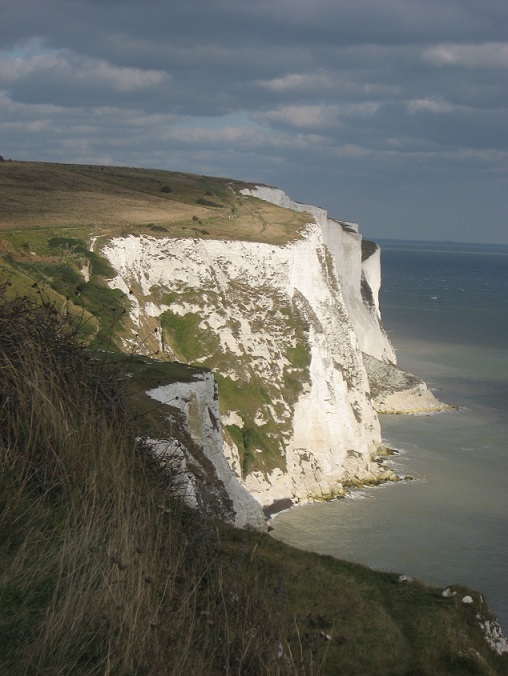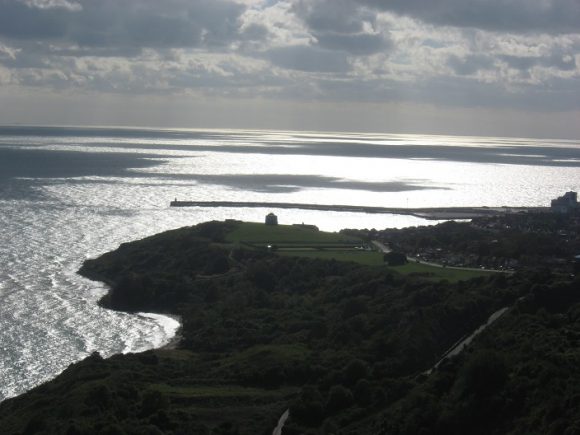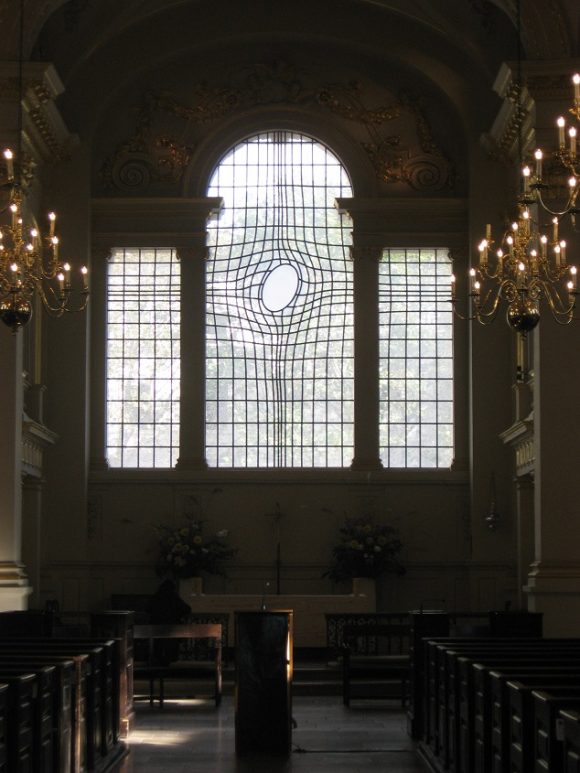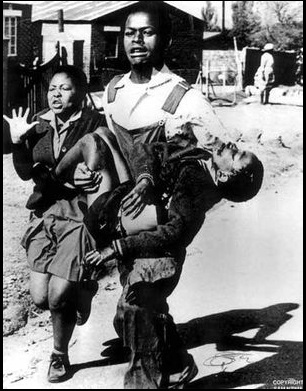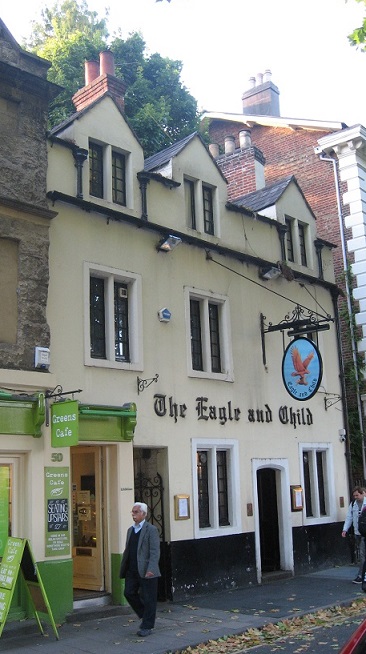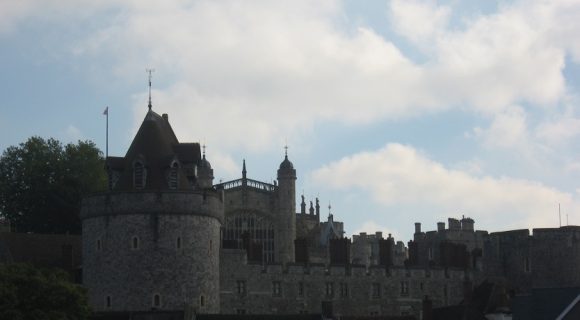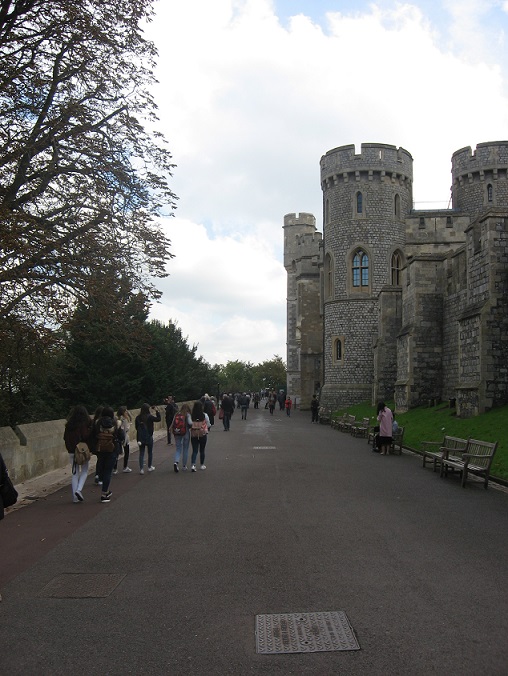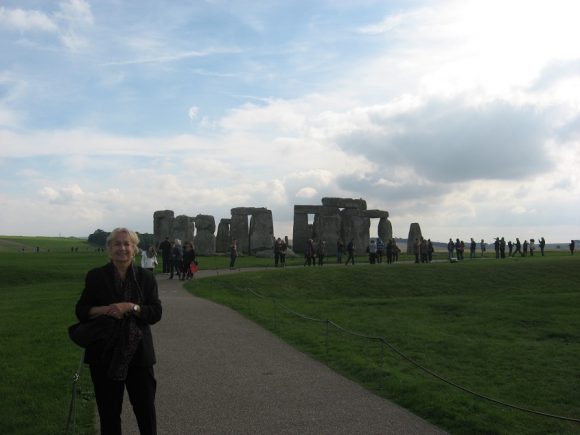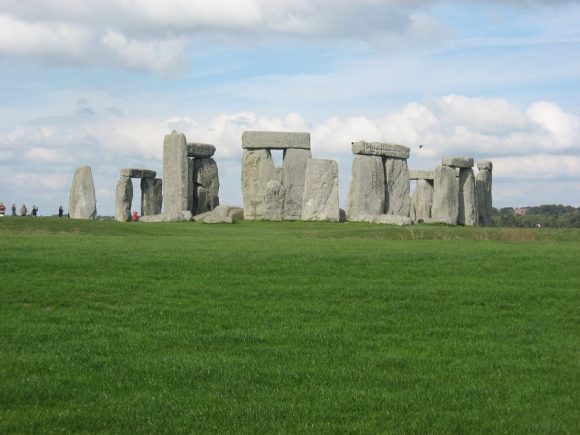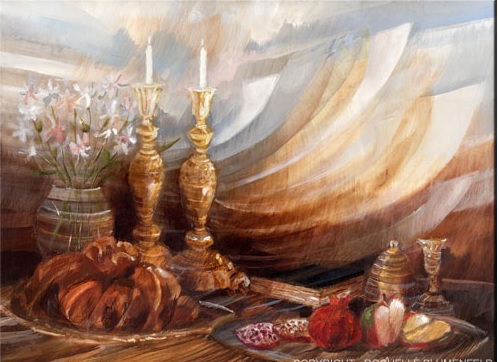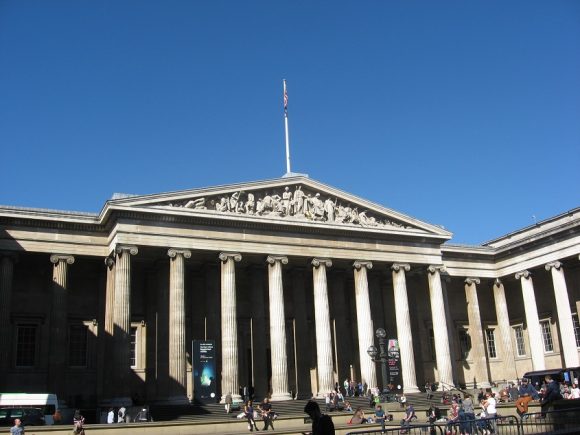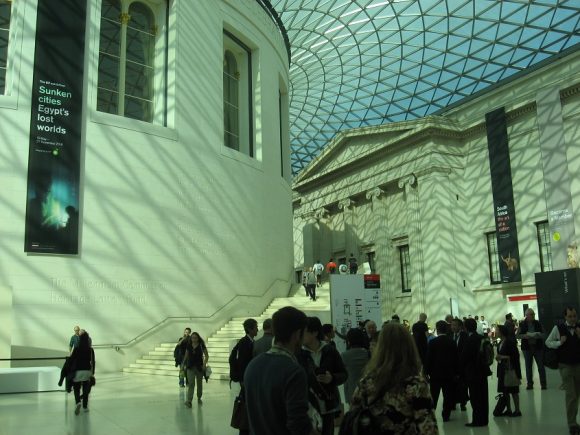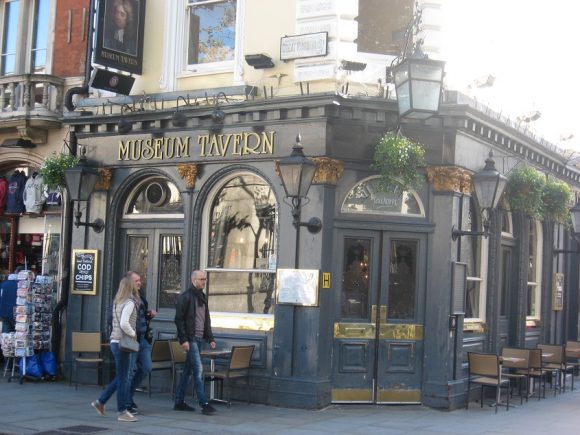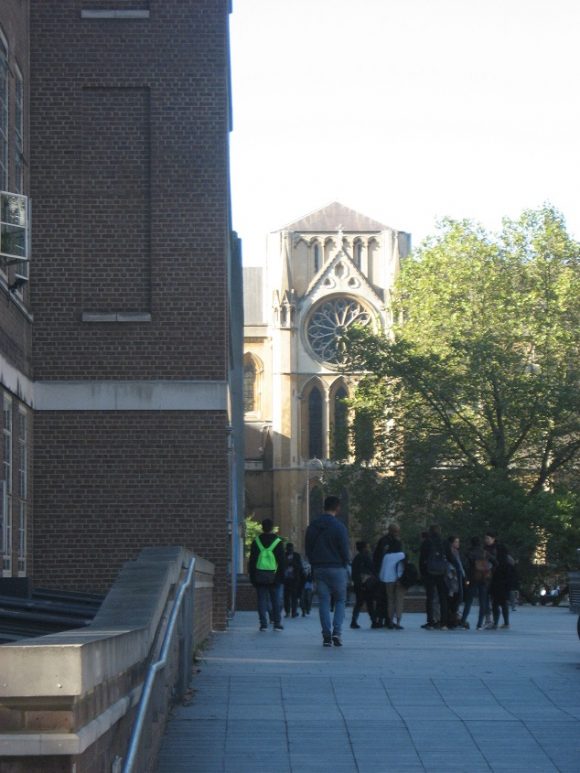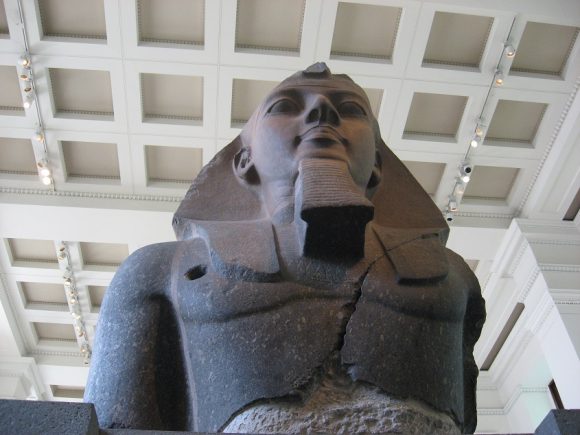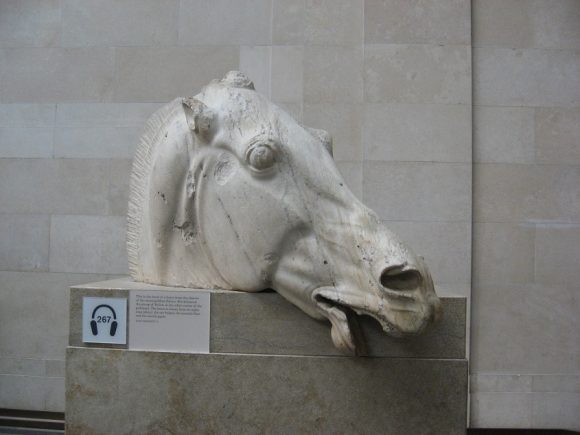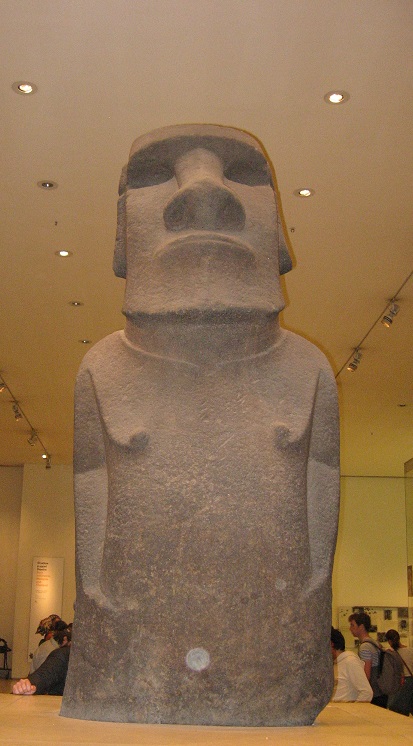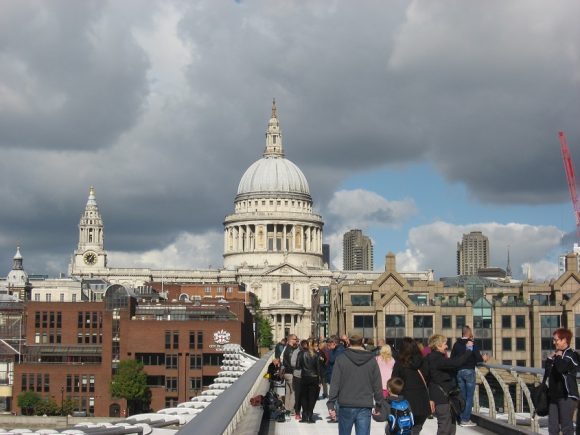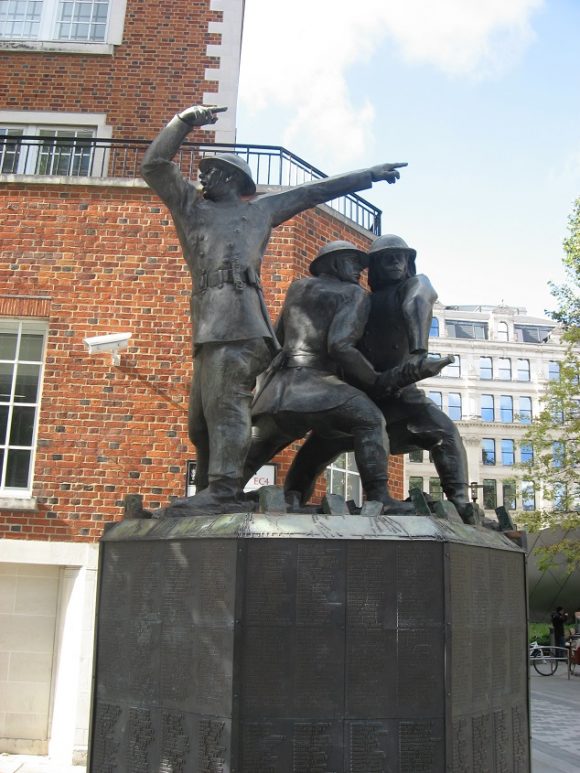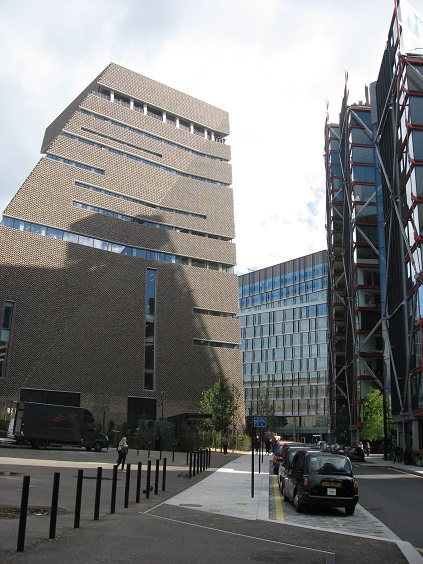Dear Commons Community,
On our last full day in London, we decided to stay close by and went to Exhibition Road and spent several hours at the Museum of Natural History and the Science Museum. After lunch at the Queens Arms, a favorite pub of college students, we went to the Museum of Natural History. Originally part of the British Museum, the Museum’s buildings and grounds are impressive. It is similar in many ways to New York’s Museum of Natural History with a massive collection and scores of exhibits. The dinosaur, mammal, and ocean life (blue whale) exhibits were the most popular. An animatronic T-Rex moves and roars and had the children screaming. A new Charles Darwin Center in an eight-story “Cocoon” focuses on biodiversity.
The Science Museum founded in 1851, has a number of exhibits on energy, space, agriculture, and the information age. It also has a number of hands-on activities popular with children. I enjoyed especially the information age exhibits including a model of Charles Babbage’s difference engine which he designed but was never able to build because of the limitations of the technology of the 1820s. There is also the Pilot ACE (Automatic Computing Engine) designed by Alan Turing, and one of the first computers built in the United Kingdom.
Tomorrow we pack and head back to New York.
Tony
Charles Babbage’s Difference Engine No. 2
Alan Turing’s Pilot ACE (Automatic Computing Engine)

